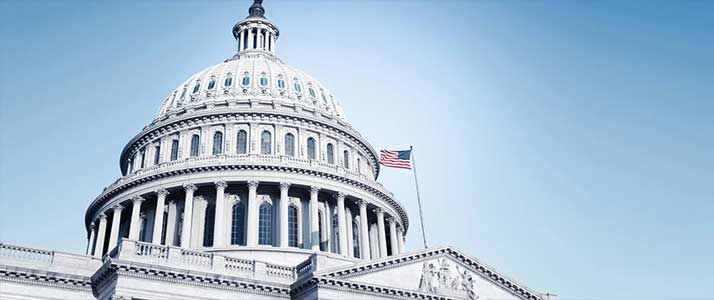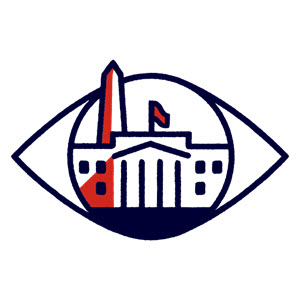Paycheck Protection Program Flexibility Act of 2020

UPDATE: On July 4, President Trump signed S. 4116, which extends the availability of loans under the Paycheck Protection Program (PPP) through August 8, 2020
H.R. 7010, the Paycheck Protection Program Flexibility Act (PPPFA or the "Act"), was signed into law on June 5, 2020, to, among other things, extend the time period allowed for businesses to spend Paycheck Protection Program (PPP) loan proceeds, and allow loan forgiveness recipients to continue deferring payment of the employer share of the Social Security tax.
Background
The Paycheck Protection Program (PPP) was established by the Coronavirus Aid, Relief, and Economic Security (CARES) Act, which was signed into law on March 27, 2020. The PPP created a new loan program through the Small Business Administration (SBA) to enable businesses and nonprofit organizations with 500 or fewer employees to obtain federally guaranteed loans to be used for payroll, rent, utilities and other specified costs. PPP loans can be 100 percent forgivable if employers maintain specified employment and wage levels, as measured by the number of full-time equivalent employees and wage levels over an eight-week "covered period."
Businesses do not need to pay interest on PPP loan amounts forgiven, and forgiven amounts are not considered federal taxable income to the business. As of May 30th, the SBA reported that more than 4.4 million PPP loans have been made since the program began on April 3, with over $510 billion disbursed.
PPPFA Changes to the Paycheck Protection Program
Policymakers explained that the PPPFA was necessary because businesses have not been able to spend PPP funds on payroll while closed, and closures have been broadly required by state and local orders in light of the COVID-19 pandemic. To address this issue, the Act now extends the PPP program "covered period" until December 31, 2020, and gives employers 24 weeks, rather than eight weeks (or December 31 if earlier) to spend PPP proceeds. However, a congressional letter was added to the record to clarify that no new PPP loans may be originated after June 30, 2020.
The Act also reduces the percentage of loan proceeds that must be spent on payroll costs from 75 percent to 60 percent, enabling businesses to spend more on overhead and fixed expenses such as rent and utilities.
New Forgiveness Reduction Safe-Harbor Measures
The PPP also provided wage and employment level safe harbors, which permitted employers to avoid a reduction in forgiveness amounts due to a significant decrease in employment and/or wage levels between February 15 and April 26, 2020, as long as the number of employees and wage levels are restored by June 30, 2020. The PPPFA extends this safe harbor restoration deadline from June 30 to December 31, 2020.
The PPPFA also clarifies that loan forgiveness will not be reduced based on an inability to rehire employees if the employer can document (1) written offers to rehire individuals who were employees of the organization on February 15, 2020; or (2) an inability to hire similarly qualified employees for unfilled positions by December 31, 2020.
Additionally, forgiveness will not be reduced for failure to maintain employment levels if the organization is able to document an inability to return to the same level of business activity as existed prior to February 15, 2020, due to compliance with COVID-19-related guidance for sanitation, social distancing, or worker or customer safety requirements from the Health and Human Services (HHS), the Centers for Disease Control and Prevention (CDC), or the Occupational Safety and Health Administration (OSHA) between March 1 and December 31, 2020.
Employers that received PPP loans prior to June 5, 2020 may elect to retain the original eight-week covered period to spend loan proceeds. Those that prefer to use the longer period of up to 24 weeks may need to demonstrate compliance with the requirements to maintain employment levels through the entire 24-week period or to restore wage and full-time equivalent employee levels by December 31, 2020.
Deferral of Employer Social Security Tax Can Continue
The PPPFA also allows employers that receive PPP loan forgiveness to continue deferring payment of the employer share of the Social Security tax under CARES Act (Section 2302) through December 31, 2020. The original PPP prohibited employers from deferring employer Social Security taxes after any portion of the PPP loan was forgiven. Deferred employer Social Security tax amounts will be due in two equal payments in December 2021 and 2022.
Deferral and Extension of Time for Loan Repayments
Loan recipients can defer principal and interest payments on any portion of PPP loans that is not forgiven. The PPPFA extends the deferral period from 6 months to the time when the SBA compensates the lender for forgiven amounts, except that repayments can be required if the borrower has not applied for forgiveness within 10 months of the expiration of the borrower's covered period.
Finally, the Act extends the term of PPP loans from two years to five years.
More Changes on the Way?
Some lawmakers have expressed an intent to seek further technical changes and clarifications to the PPPFA in the coming weeks, so further changes may be forthcoming. In any event, the SBA's recently-issued Loan Forgiveness Application Form and Loan Forgiveness Interim Final Rules will need to be amended to account for the new deadlines and extended covered period. Borrowers who choose to stay with the current 8-week covered period may be able to use the current Loan Forgiveness Application. Interested persons should watch for revised forms and instructions from the SBA and Treasury Department.
ADP Compliance Resources
ADP maintains a staff of dedicated professionals who carefully monitor federal and state legislative and regulatory measures affecting employment-related human resource, payroll, tax and benefits administration, and help ensure that ADP systems are updated as relevant laws evolve. For the latest on how federal and state tax law changes may impact your business, visit the ADP Eye on Washington Web page located at www.adp.com/regulatorynews.
ADP is committed to assisting businesses with increased compliance requirements resulting from rapidly evolving legislation. Our goal is to help minimize your administrative burden across the entire spectrum of employment-related payroll, tax, HR and benefits, so that you can focus on running your business. This information is provided as a courtesy to assist in your understanding of the impact of certain regulatory requirements and should not be construed as tax or legal advice. Such information is by nature subject to revision and may not be the most current information available. ADP encourages readers to consult with appropriate legal and/or tax advisors. Please be advised that calls to and from ADP may be monitored or recorded.
If you have any questions regarding our services, please call 855-466-0790.
ADP, LLC.
One ADP Boulevard,
Roseland, NJ 07068
Updated on July 6, 2020



